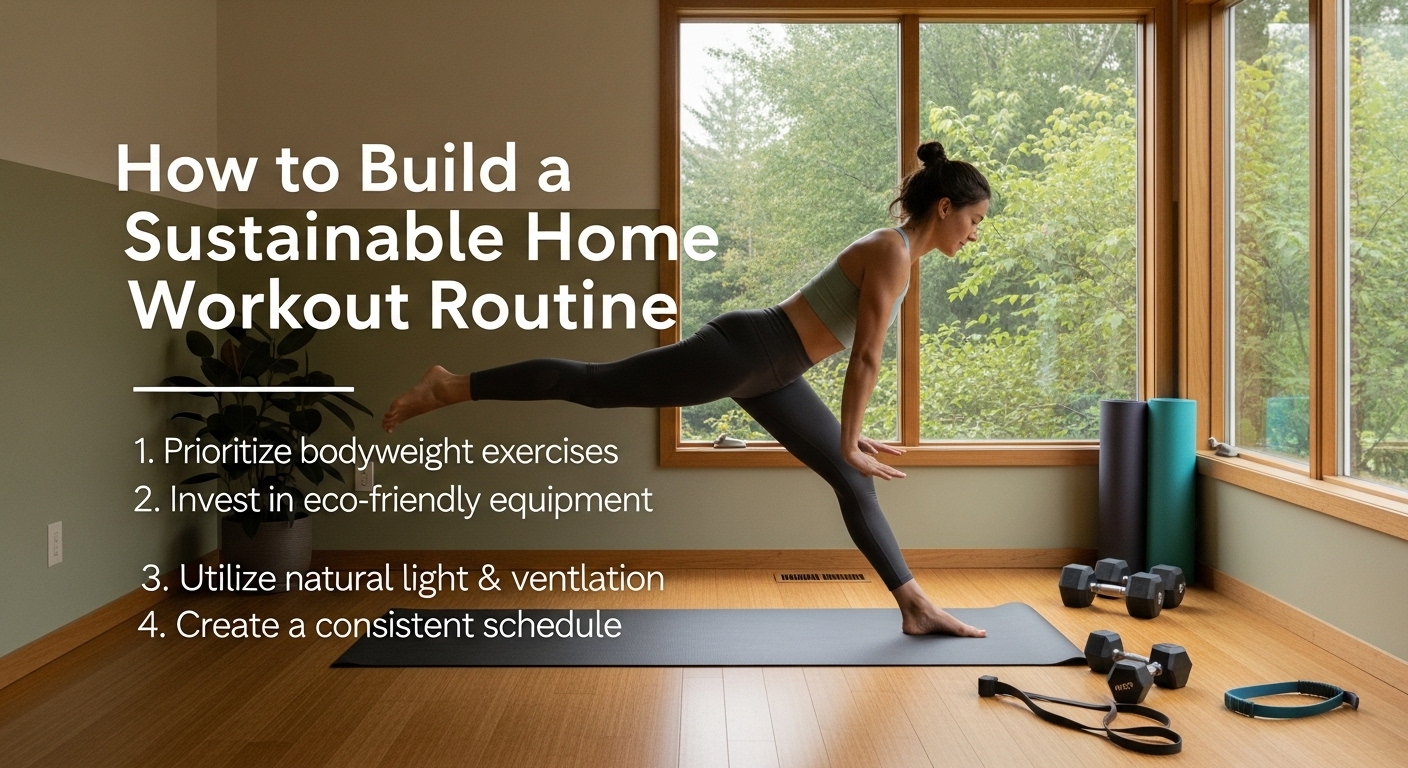How to Build a Sustainable Home Workout Routine
How to Build a Sustainable Home Workout Routine
Staying fit doesn’t always mean hitting the gym. With the right mindset and structure, you can build a sustainable home workout routine that keeps you motivated, strong, and consistent — no fancy equipment required. Let’s explore how to create a home fitness plan that lasts.
Why Sustainability Matters in Fitness
Many people start home workouts full of enthusiasm but lose momentum after a few weeks. The key to long-term success lies in sustainability — creating a routine that fits your lifestyle, not one that burns you out. Sustainable fitness is about consistency, balance, and enjoyment, ensuring you can maintain progress without feeling overwhelmed.
Step 1: Define Your Fitness Goals
Before you start, be clear on what you want to achieve.
Ask yourself:
-
Do you want to lose weight, build muscle, or increase endurance?
-
Are you working out for better health, stress relief, or body confidence?
Setting SMART goals (Specific, Measurable, Achievable, Relevant, Time-bound) helps you track progress and stay motivated. For example: “I want to perform 20 push-ups without stopping within 6 weeks.”
Step 2: Choose Workouts You Enjoy
Enjoyment fuels consistency. Choose activities that fit your preferences and fitness level:
-
Bodyweight exercises: Squats, push-ups, planks, and lunges.
-
Cardio options: Jump rope, dancing, brisk walking, or HIIT.
-
Mind-body workouts: Yoga, stretching, or Pilates for balance and flexibility.
You don’t need to copy someone else’s routine — experiment and find what keeps you moving.
Step 3: Create a Realistic Schedule
A sustainable plan fits into your life seamlessly.
Start small — even 20–30 minutes, 3 to 4 times a week — and build from there. Consistency matters more than intensity. Schedule your workouts like important appointments and set reminders to keep yourself accountable.
Step 4: Set Up a Dedicated Space
You don’t need a full home gym to stay fit. Clear a small area where you can move freely and store basic equipment like:
-
A yoga mat
-
Resistance bands
-
Dumbbells or water bottles
-
A jump rope
Having a designated workout zone signals your brain that it’s time to exercise, helping you stay focused.
Step 5: Track Your Progress
Seeing improvement keeps motivation high. Track your reps, sets, or endurance over time — or take progress photos every few weeks. Celebrate small wins like better stamina or improved form. Progress doesn’t always show on the scale — it’s about feeling stronger and healthier.
Step 6: Prioritize Recovery and Rest
Rest is part of progress. Overtraining can lead to burnout or injury. Include rest days, get enough sleep, and stretch after workouts. Balance is key — your body needs time to repair and grow stronger.
Step 7: Stay Flexible and Adapt
Life happens — missed workouts, busy days, low energy. Instead of giving up, adapt. Shorten your session, switch to lighter exercises, or focus on mobility. A sustainable routine allows flexibility while keeping you on track.
Final Thoughts
Building a sustainable home workout routine isn’t about perfection — it’s about progress and consistency. When you enjoy the process, stay realistic, and listen to your body, fitness becomes a lifestyle rather than a chore.
Start where you are, use what you have, and move every day with intention. Your home can be your most powerful gym.

